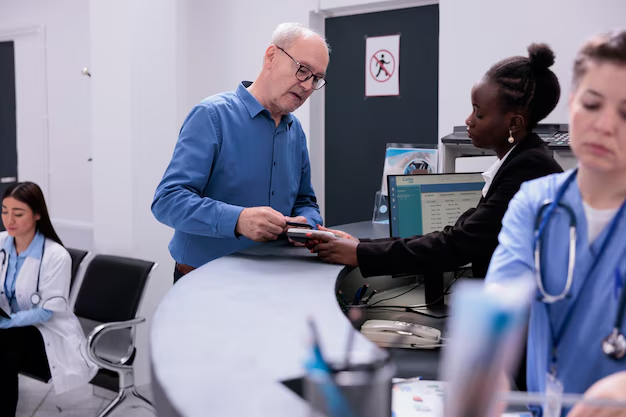Understanding Leukemia: Is Treatment Possible?
Leukemia, a type of cancer affecting the blood and bone marrow, often leaves those diagnosed and their loved ones with more questions than answers. The primary concern for many is whether leukemia is treatable. This comprehensive guide aims to provide a clear understanding of leukemia treatment options, exploring various angles to offer readers a well-rounded perspective.
The Basics of Leukemia
To understand if leukemia is treatable, it's crucial first to grasp what leukemia is. Leukemia occurs when abnormal white blood cells rapidly increase, interfering with the bone marrow's ability to produce healthy blood cells. This can lead to vulnerabilities such as infections, anemia, and bleeding.
Different Types of Leukemia
- Acute Lymphoblastic Leukemia (ALL): Common in children, this type progresses rapidly.
- Acute Myeloid Leukemia (AML): Affects both children and adults and also progresses quickly.
- Chronic Lymphocytic Leukemia (CLL): Typically affects those over the age of 55 and progresses slowly.
- Chronic Myeloid Leukemia (CML): Can occur at any age but is more common in adults, with a slower progression.
Symptoms to Be Aware Of
Leukemia symptoms may include fatigue, frequent infections, unexplained bruising, and night sweats. Early diagnosis can significantly impact the effectiveness of treatment, underlining the importance of recognizing these symptoms.
Is Leukemia Treatable?
The short answer is yes, leukemia is treatable. However, the treatment approach and prognosis can vary significantly based on the leukemia type, the patient's age and overall health, and how far the disease has progressed.
Factors Influencing Treatment Outcomes
- Type of Leukemia: Some types, like certain forms of ALL in children, have high treatment success rates.
- Genetic Factors: Specific genetic mutations can influence response to treatment.
- Early Detection: As with many cancers, early detection can improve treatment effectiveness.
Common Treatment Options
Chemotherapy
Chemotherapy uses drugs to kill or slow the growth of cancer cells. It's often the first line of treatment for many leukemia cases, with protocols tailored to the specific type and stage of leukemia.
Radiation Therapy
In some cases, radiation therapy may be used to target leukemia cells, especially when they have spread to the brain or central nervous system.
Targeted Therapy
Targeted therapy uses drugs that identify and attack specific cancer cells with minimal impact on normal cells. This approach is typically used for certain types of chronic leukemia, like CML.
Immunotherapy
Immunotherapy enlists and enhances the body's immune system to fight cancer. Recent advancements have increased its availability and effectiveness for leukemia patients.
Stem Cell Transplantation
This involves replacing diseased bone marrow with healthy stem cells. It can be a powerful treatment method, particularly for patients who relapse after initial therapies.
Managing Life with Leukemia
While treatments can be effective, living with leukemia often requires adjustments and ongoing management. Here are some key considerations:
Maintaining a Healthy Lifestyle
Adopting a healthy diet, engaging in regular physical activity, and getting adequate sleep can help strengthen the body during treatment.
Psychological Support
Emotional and psychological support is crucial. Whether through counseling, support groups, or therapy, addressing the mental health aspects can aid in coping with the disease.
Monitoring and Follow-Up
Regular follow-ups with healthcare providers are essential to track the disease's progress and adjust treatment plans as necessary.
Recent Advances in Leukemia Treatment
Scientific advancements have significantly improved leukemia treatment outcomes. Some of the noteworthy developments include:
- CAR T-cell Therapy: This innovative treatment modifies a patient's T-cells to attack leukemia cells, offering hope in cases where traditional therapies fail.
- Genetic Profiling: Personalized treatment plans based on genetic makeup are enhancing treatment accuracy and effectiveness.
- Molecular Targeting: New drugs that target specific mutations in leukemia cells are helping improve remission rates.
The Road to Remission
With the proper treatment plan, many leukemia patients achieve remission, meaning the absence of detectable cancer cells. Some may even be considered cured, especially children with ALL or adults with certain chronic leukemias.
Steps Towards Remission
- Early Diagnosis: Increases treatment effectiveness.
- Personalized Treatment Plans: Tailored therapies improve outcomes.
- Adhering to Treatment: Following prescribed regimens aids remission.
- Regular Monitoring: Ensures swift response to any changes in health.
Empowering Patients and Families
Understanding leukemia's treatability empowers patients and their families to make informed decisions and actively participate in treatment planning. Education, support, and communication with healthcare providers are key.
Questions to Ask Your Doctor
- What type of leukemia do I have?
- What treatment options are available to me?
- What are the potential side effects of these treatments?
- How will treatment affect my daily life?
- What support services are available?
Closing Words
While a leukemia diagnosis can be daunting, knowing that treatment options exist and are continually advancing offers hope. The journey may be challenging, but with a combination of medical expertise, support, and perseverance, many patients lead fulfilling lives post-diagnosis.
Key Takeaways:
- Leukemia is treatable, with success rates varying based on multiple factors.
- Treatment options include chemotherapy, radiation, targeted therapy, immunotherapy, and stem cell transplantation.
- Advancements in treatment are improving outcomes, such as CAR T-cell therapy and molecular targeting.
- Patient empowerment through education and support leads to better management.
- Regular monitoring and lifestyle management can help maintain health during and after treatment.
🔹 Stay Informed: Keep up with treatment advancements. 🔹 Seek Support: Utilize emotional and mental health resources. 🔹 Adhere to Treatment Plans: Follow through with prescribed treatments. 🔹 Maintain Regular Check-Ups: Early detection and intervention are crucial.
By understanding the various aspects of leukemia treatment, patients and their families can navigate the journey with confidence and hope for a healthier future.

Related Articles
- Can Leukemia Be Cured
- How Do Cats Get Feline Leukemia
- How Do They Test For Leukemia
- How Do You Get Leukemia
- How Do You Test For Leukemia
- How High Are Monocytes In Leukemia
- How Is Feline Leukemia Spread
- How Is Feline Leukemia Transmitted
- How Is Leukemia Diagnosed
- How Long Can You Live With Chronic Lymphocytic Leukemia